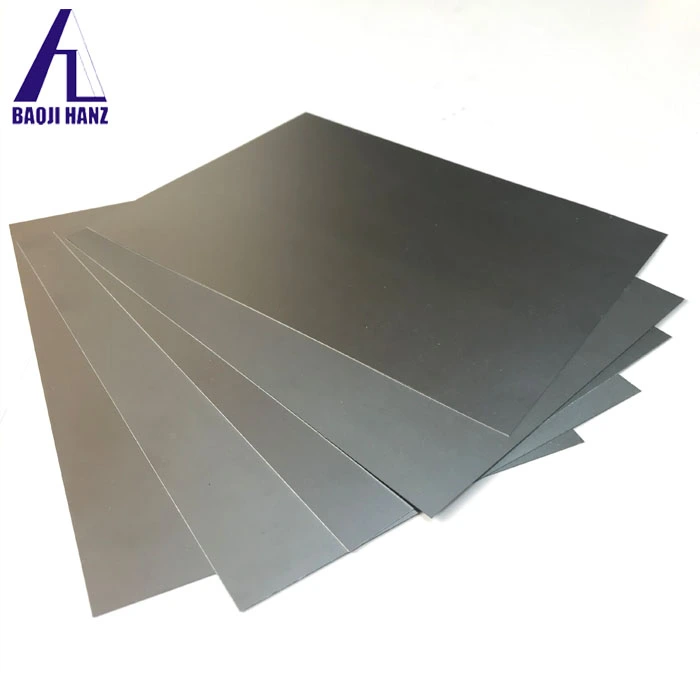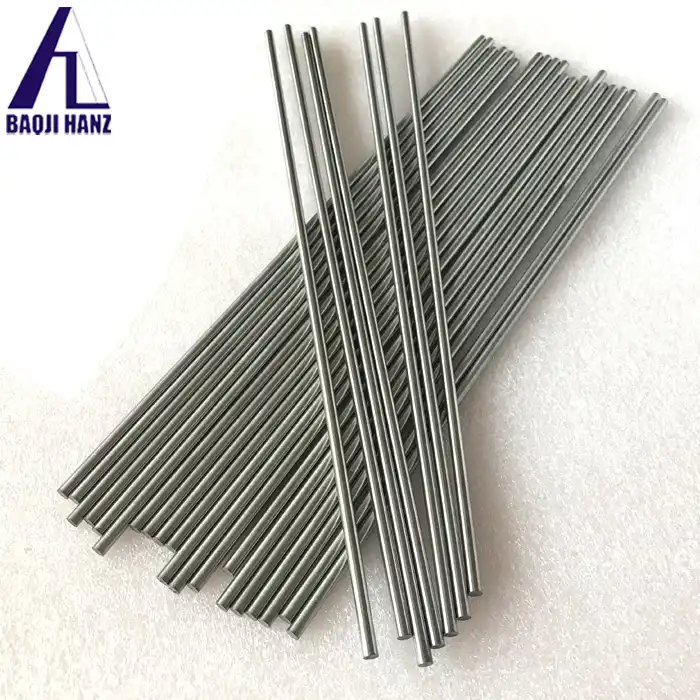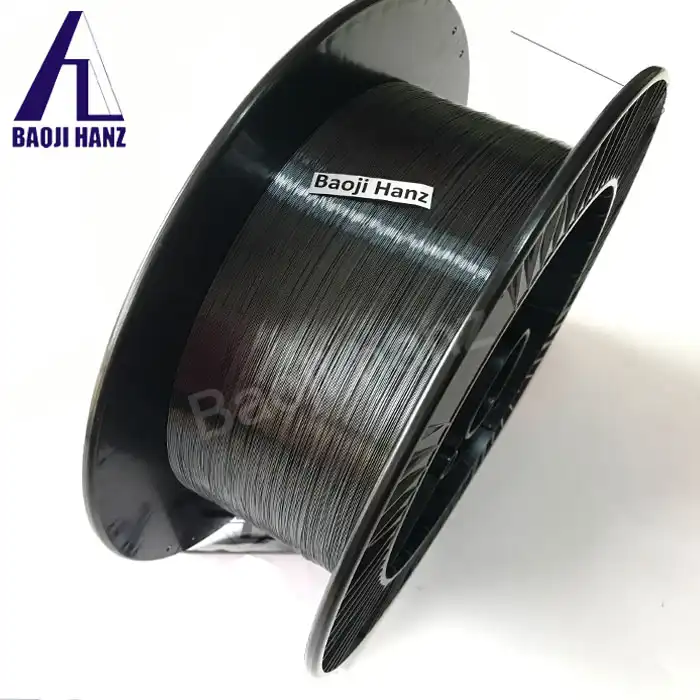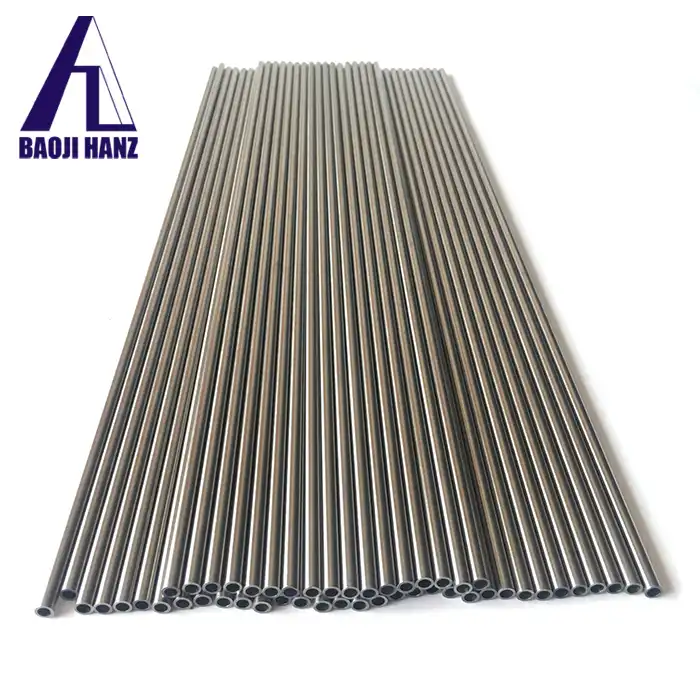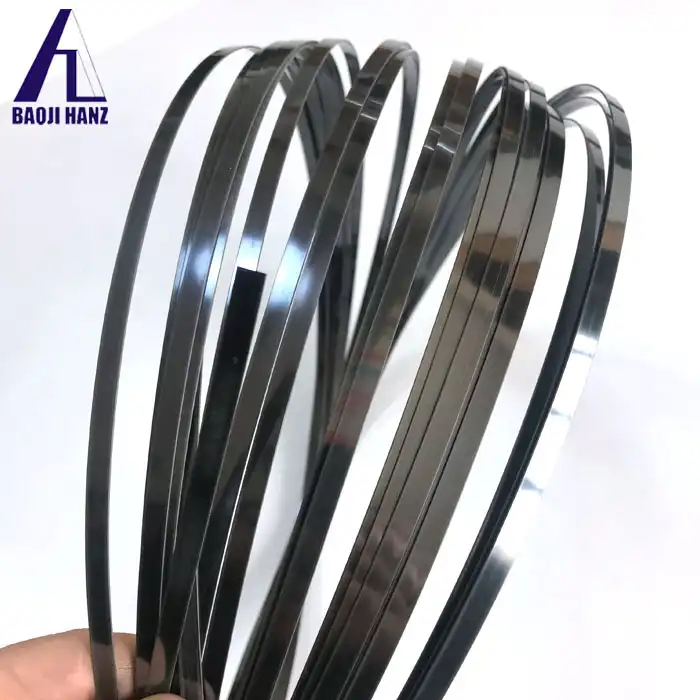What is superelastic titanium nickel alloy wire used for in the medical field?
2025-04-18 18:03:56
Medical superelastic titanium nickel alloy wire has revolutionized numerous medical applications due to its exceptional flexibility, shape memory properties, and biocompatibility. This advanced material, produced by leading manufacturers like Baoji Hanz Metal Material Co., Ltd., has become indispensable in modern medicine. The remarkable mechanical properties of these NiTi wires allow for minimally invasive procedures, improved patient outcomes, and more durable medical devices. From cardiovascular stents to orthodontic archwires and neurosurgical instruments, these wires have transformed treatment approaches across multiple specialties by combining strength with flexibility and providing consistent performance in the challenging environment of the human body.
Applications in Cardiovascular Procedures
Stent Manufacturing and Deployment
Medical superelastic titanium nickel alloy wire has revolutionized stent technology in cardiovascular medicine. These wires provide the perfect balance of flexibility for navigation through tortuous blood vessels and strength for maintaining vessel patency once deployed. The superelastic properties allow stents to be compressed into delivery catheters and then expand to their predetermined shape once released at the target site. This is particularly valuable in treating coronary artery disease, where the wire-based stent frameworks maintain open pathways for blood flow while conforming to the natural vessel anatomy. According to medical device engineers, a single superelastic NiTi wire stent can withstand over 400 million cardiac cycles without fatigue failure. Medical superelastic titanium nickel alloy wire from Baoji Hanz Metal Material Co., Ltd. comes with a diameter range of 0.1mm to 5mm, making it suitable for various vascular applications, from coronary interventions to peripheral vascular procedures. The ISO13485:2016 certification ensures these wires meet stringent medical requirements for cardiovascular applications.
Guidewire Development for Catheterization
The development of guidewires for catheterization procedures has been significantly enhanced by medical superelastic titanium nickel alloy wire. These wires combine excellent torque transmission with flexibility, allowing interventional cardiologists to navigate through complex vascular structures with unprecedented precision. The core-to-tip response of NiTi guidewires ensures that rotational movements at the physician's end translate accurately to the wire tip inside the patient's vasculature. This characteristic is crucial during angioplasty and stent placement procedures, where millimeter-precise positioning can determine procedural success. Medical superelastic titanium nickel alloy wire guidewires also demonstrate superior kink resistance compared to traditional stainless steel alternatives, reducing the risk of wire damage during complex interventions. Baoji Hanz Metal Material Co., Ltd. manufactures these wires with high superelasticity that ensures flexibility and resilience, critical for navigating through tortuous vessels without causing trauma. The wires' fatigue resistance makes them suitable for repeated mechanical stress during lengthy catheterization procedures, providing consistent performance throughout the intervention.
Embolic Protection Devices
Embolic protection devices utilizing medical superelastic titanium nickel alloy wire have become essential tools in preventing stroke and other embolic complications during cardiovascular interventions. These devices typically feature a mesh basket or filter constructed from ultrafine NiTi wires that can capture embolic debris while maintaining blood flow. The superelastic properties allow these protection devices to be compressed into low-profile delivery systems and then expand to their functional shape within vessels of various diameters. The precision manufacturing capabilities at Baoji Hanz Metal Material Co., Ltd. ensure tight dimensional tolerances for consistent performance of these critical protection systems. Medical superelastic titanium nickel alloy wire's biocompatibility is particularly important in these applications, as these devices remain in contact with flowing blood throughout procedures that may last several hours. The corrosion resistance of these wires withstands exposure to body fluids and sterilization processes, maintaining structural integrity and functionality throughout their intended use. With OEM services available, physicians can specify customized configurations optimized for specific anatomical challenges or procedural requirements.
Applications in Orthopedics and Neurosurgery
Spinal Fixation Systems
Medical superelastic titanium nickel alloy wire has transformed spinal stabilization procedures, offering advantages that traditional materials cannot match. In spinal fixation systems, these wires provide dynamic stabilization that accommodates the natural movement of the spine while maintaining corrective forces for treating scoliosis, kyphosis, and other spinal deformities. Unlike rigid stainless steel or titanium rods, NiTi wires allow for controlled micromotion, which has been shown to promote healing and reduce adjacent segment degeneration. The superelasticity of these wires also facilitates less invasive surgical techniques, as they can be temporarily deformed during insertion and then recover their engineered shape to provide the intended corrective forces. Medical superelastic titanium nickel alloy wire produced by Baoji Hanz Metal Material Co., Ltd. comes with certifications including ISO9001:2015 and ISO13485:2016, ensuring that the materials meet the highest quality standards for orthopedic implants. The high strength-to-weight ratio of these wires ensures lightweight yet robust performance, reducing the burden on patients while providing reliable fixation.
Fracture Fixation Devices
Internal fixation of fractures has been revolutionized by the introduction of medical superelastic titanium nickel alloy wire. These wires serve as intramedullary fixation devices that provide continuous compression across fracture sites, promoting optimal healing conditions. The unique stress-strain characteristics of NiTi allow for the creation of fixation devices that maintain constant force regardless of small displacements during the healing process. This "dynamic compression" has been associated with improved callus formation and accelerated healing in clinical studies. The shape memory effect of these wires is particularly valuable in orthopedic trauma surgery, where devices can be inserted in a compact form through minimally invasive approaches and then activated to assume their functional shape using body temperature or external stimuli. Medical superelastic titanium nickel alloy wire manufactured by Baoji Hanz Metal Material Co., Ltd. provides consistent performance due to their precision manufacturing with tight dimensional tolerances. These wires are available in various sizes and specifications to meet specific requirements for different fracture patterns and anatomical locations, from small hand bones to weight-bearing long bones.
Neurovascular Interventions
Neurovascular interventions represent one of the most demanding applications for medical superelastic titanium nickel alloy wire, requiring exceptional flexibility, biocompatibility, and reliability. In the treatment of intracranial aneurysms, microguidewires constructed from ultrafine NiTi filaments enable navigation through the tortuous cerebral vasculature with minimal risk of vessel perforation or spasm. The controlled flexibility of these wires allows neurointerventionalists to access previously unreachable areas of the brain using endovascular approaches. Similarly, flow diverters and stent retrievers used in the management of acute ischemic stroke rely on the unique properties of medical superelastic titanium nickel alloy wire to achieve high functional success rates with minimal complications. These devices must deploy precisely, maintain their shape under variable flow conditions, and withstand the mechanical stresses of thrombus engagement and retrieval. Baoji Hanz Metal Material Co., Ltd. supplies medical superelastic titanium nickel alloy wire for micro-guidewires designed specifically for minimally invasive neurological procedures. Their product's durability makes it resistant to corrosion and fatigue, even in the challenging environment of cerebral circulation. These wires are prepared and packaged in secure, sterile conditions to ensure safety for these critical neurovascular applications.
Applications in Dental and Maxillofacial Procedures
Orthodontic Archwires
Medical superelastic titanium nickel alloy wire has revolutionized orthodontic treatment through the development of sophisticated archwires that deliver continuous, gentle forces for tooth movement. These NiTi archwires provide predictable force levels over extended periods and across large deflections, enabling more efficient tooth movement with reduced discomfort compared to traditional stainless steel wires. The superelastic plateau in the stress-strain curve of these wires means that they can be engaged in severely misaligned teeth while delivering physiologically appropriate forces that minimize the risk of root resorption or periodontal damage. Orthodontists particularly value the thermal-responsive variants of these wires, which can be softened for easier placement using cold spray and then warm to body temperature to exert their therapeutic forces. Medical superelastic titanium nickel alloy wire from Baoji Hanz Metal Material Co., Ltd. has become the standard in modern orthodontics due to its consistent performance characteristics and biocompatibility. Their manufacturing process ensures precise composition control, resulting in predictable transformation temperatures crucial for clinical success. The company's ability to provide customized wire compositions allows orthodontists to select specific force systems optimized for different treatment phases or patient needs.
Endodontic Instruments
The field of endodontics has been transformed by the introduction of medical superelastic titanium nickel alloy wire instruments for root canal procedures. Rotary files fabricated from these wires can navigate curved and narrow root canals with significantly reduced risk of ledging, transportation, or perforation compared to traditional stainless steel instruments. The flexibility of NiTi files allows them to maintain the original canal anatomy while effectively removing infected pulp tissue and dentin. Additionally, the superelastic properties provide enhanced resistance to cyclic fatigue, although practitioners must still adhere to recommended usage limits to prevent unexpected instrument separation. The metallurgical advancements in medical superelastic titanium nickel alloy wire have led to the development of specialized thermal treatments and manufacturing processes that optimize the mechanical properties for specific endodontic applications. Baoji Hanz Metal Material Co., Ltd. provides medical superelastic titanium nickel alloy wire with the shape memory effect that allows these instruments to recover their original shape after deformation during canal negotiation. The precision manufacturing ensures consistent performance across batches, which is crucial for predictable clinical outcomes in endodontic therapy. With diameters ranging from 0.1mm to larger sizes, these wires are perfect for creating the diverse instrument tapers needed in modern endodontic systems.
Maxillofacial Reconstruction
Medical superelastic titanium nickel alloy wire has found valuable applications in maxillofacial reconstruction, where its unique properties address the complex functional and aesthetic requirements of the craniofacial skeleton. These wires serve as dynamic fixation elements in mandibular reconstruction following trauma or oncologic resection, providing stable support while accommodating the functional movements of chewing and speaking. The biocompatibility of NiTi is particularly important in these applications, as these implants often remain in place permanently and must integrate with surrounding tissues without adverse reactions. In orbital floor reconstruction, mesh structures fabricated from medical superelastic titanium nickel alloy wire provide excellent support for orbital contents while conforming precisely to the three-dimensional anatomy of the orbital cavity. Baoji Hanz Metal Material Co., Ltd. manufactures medical superelastic titanium nickel alloy wire that meets medical-grade safety standards, minimizing the risk of adverse reactions in these sensitive applications. The customization options available allow surgeons to request specific dimensions and configurations optimized for individual patient anatomy. The combination of corrosion resistance and fatigue resistance makes these wires ideal for the dynamic environment of the maxillofacial region, where implants must withstand years of cyclic loading during normal function.
Conclusion
Medical superelastic titanium nickel alloy wire has revolutionized numerous medical fields through its unique combination of flexibility, strength, biocompatibility, and shape memory properties. From cardiovascular interventions to orthodontics and neurosurgery, these advanced materials continue to enable less invasive procedures, improved outcomes, and enhanced patient comfort.
If you're looking for high-quality medical superelastic titanium nickel alloy wire, Baoji Hanz Metal Material Co., Ltd. stands ready to serve your needs. With 7 years of expertise in Nitinol Shape Memory Alloy, Superelastic Nitinol Alloy, and Nickel Titanium Alloy, we offer substantial cost advantages through direct supply and maintain a large stock of standard sizes for fast delivery. Ready to explore how our medical-grade NiTi wire can enhance your next medical device project? Contact our team today at baojihanz-niti@hanztech.cn to discuss your specific requirements or request a sample.
Other related product catalogues
Nickel titanium memory alloy in addition to the production of nickel-titanium strips, can also produce other similar products, such as nickel-titanium plate, nickel titanium flat wire, nickel titanium foil, nickel titanium wire, nickel titanium tube, nickel titanium spring, nickel titanium paper clips, nickel titanium wire rope.
|
|
|
|
|
|
|
|
References
1. Duerig, T.W., Pelton, A.R., & Stöckel, D. (1999). An overview of nitinol medical applications. Materials Science and Engineering: A, 273-275, 149-160.
2. Morgan, N.B. (2004). Medical shape memory alloy applications—the market and its products. Materials Science and Engineering: A, 378(1-2), 16-23.
3. Stoeckel, D., Pelton, A., & Duerig, T. (2004). Self-expanding nitinol stents: material and design considerations. European Radiology, 14(2), 292-301.
4. Pelton, A.R., Stöckel, D., & Duerig, T.W. (2000). Medical uses of nitinol. Materials Science Forum, 327, 63-70.
5. Otsuka, K., & Ren, X. (2005). Physical metallurgy of Ti–Ni-based shape memory alloys. Progress in Materials Science, 50(5), 511-678.
6. Buehler, W.J., & Wang, F.E. (1968). A summary of recent research on the Nitinol alloys and their potential application in ocean engineering. Ocean Engineering, 1(1), 105-120.

